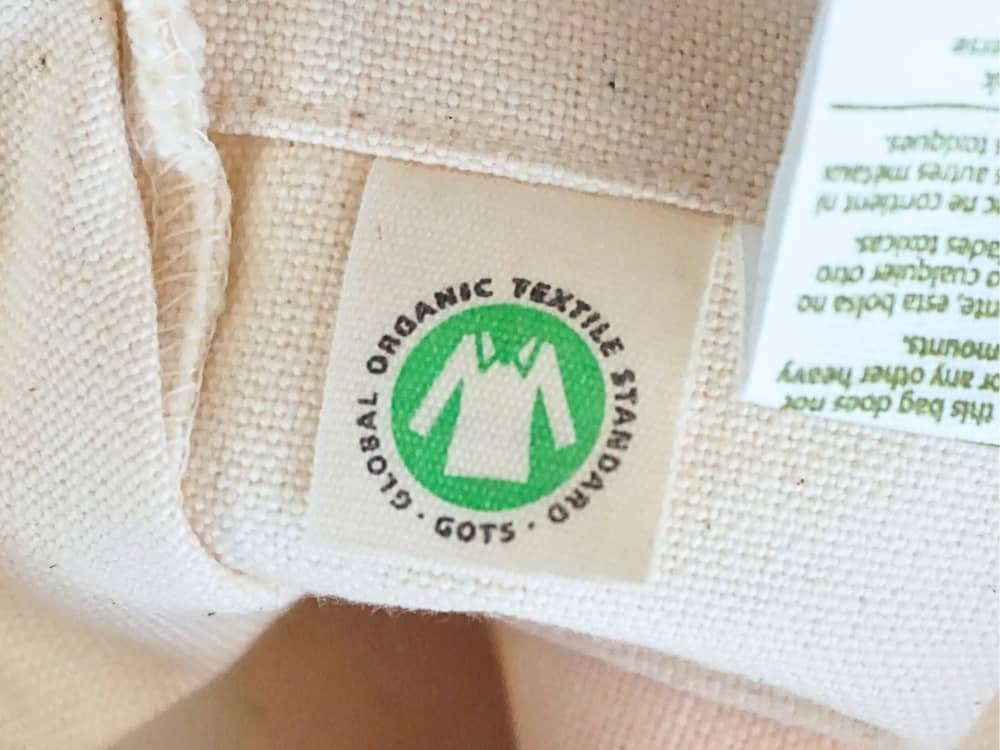
In The Red From Going Green: Why Are Sustainable Products More Expensive?
Sustainable products should be an imperative and not a privilege, and yet the cost of sustainability means it largely remains the latter.
Now more than ever, brands and consumers alike are being called to acknowledge how the ruling class is largely responsible for moving the needle on sustainability into a popular movement.
While this has its benefits, it has also ignored the experience of those marginalized communities it claims to help advance.
Sustainability advocate and Slow Factory founder Celine Semaan sums it up well:
“We are stuck in the momentum of a system that relies on exploitation to provide products for sale, and every effort to improve the system and break out of those systems will be working against the grain.”
In other words, reshaping the commodity system is going to take a lot more than just tacking on “for people” or “for planet” to a brand’s obvious mandate “for profit.”
So, what’s the deal? Why are sustainable products more expensive?
Is it just clever greenwashing to turbo-charge the supposed “value”?
Are sustainable brands pulling a fast one over us with their eco-luxury prices?
Or is it that sustainable alternatives appear unreasonably costly because we’ve been spoon-fed a misleading narrative that the race to the bottom line is what’s best for us all?
And who really benefits from that?
We’re not suggesting we all splurge $15 on artisanal handcrafted eco-soda that promises twenty kilos of ocean plastic are removed per purchase instead of a cold glass of plain water, but is there a time and a place for a sustainable splurge?
Does there need to be a splurge at all?
And why, why, why are eco-friendly products more expensive, after all?
Hold onto your sustainable wallets and fasten your custom vegan ethically sourced seatbelts as we explore why sustainable products are more expensive than their conventional alternatives.
Uncovering Why Sustainable Products Are More Expensive
- Demand
- Quality Raw Materials
- Fair Wages
- Lack Of Toxins
- Third-Party Certifications
- Better Business Practices & Governance
- Product Longevity
- Is Sustainable Pricing Really Just Greenwashing?
- Tips For Buying Green On A Budget
1. Demand

Sustainable living is on the rise, with everyone from the Harvard Business Review to Forbes eyeing the consumer drive toward the sustainability imperative.
In the past five years alone, the world has seen a 71% increase in online searches for sustainable goods.
Sustainable fashion statistics for the younger generations found that a whopping 73% of millennials are willing to pay more for eco friendly alternatives.
And 90% of Gen Z say they’ve adjusted their daily life to be more sustainable to reduce carbon emissions and that sustainable fashion choices played a key role in this.
That said, only a fraction of our store shelves reflect this currently, which means the low demand has a ways to go.
So is sustainability expensive?
At the present moment, yes, but does sustainability have to be expensive?
Well, typically the cost of goods goes down with a rise in consumer demand. This happens due to economies of scale (after all the setup costs, the larger the production, the less cost per item to produce) and also competition driving down prices.
Due to less demand, eco-friendly companies also tend to lack the resources that big brands have to market themselves. This makes sustainable goods less recognizable and less purchased than their traditional counterparts.
So next time you purchase a sustainable product, realize you’re not only reducing your environmental footprint, but you’re also driving a demand for sustainable options.
In turn, this will eventually reduce costs for sustainable products.
2. Quality Raw Materials

As for how much more expensive are sustainable products, it depends on various factors, but these typically begin with what something is made of.
Put simply, you get what you pay for.
Quality costs more, which also applies to sustainable purchases and plastic-free or zero waste product packaging.
The cost of sustainable products is often higher because of the quality of raw materials used. Sustainable sourcing, while more ethical and environmentally friendly, comes at a premium. (Or is it that everything else is just utterly exploited and underpaid?)
Everything from organic cotton and sustainable dyes to recycled paper and bioplastic are eco-friendly and more expensive, since the processes to create them entail more.
After all, businesses don’t choose to source irresponsibly or to generate large amounts of pollution because they enjoy it. They do it to save money.
For example, natural and sustainable materials like bamboo fabric or organic cotton cost more than synthetic petroleum-based nylon or fleece, since they’re grown and produced in a manner that takes account of the environment.
A farm that uses no pesticides, a textile dyeing process that is free from toxins, a factory that uses renewable energy, and a production line that works to minimize textile waste—all facets of a sustainable supply chain—are more costly than mass-producing, charcoal spewing manufacturing processes that make plastic clothing.
Plus, while almost all traditional products, clothes, and goods are mass-produced, most eco-friendly products are made on a significantly smaller scale, many even being handmade.
That said, when you opt for the cheaper, synthetic, mass-produced and non-sustainable option, you’re essentially approving of the harmful practices. You’re funding the pollution and disincentivizing the business from having to do any differently.
This is why ‘dollar voting’ for the kind of world you want to live in is so crucial, and paying a higher cost for sustainable materials is so important.
3. Fair Wages

Along with traditional products being cheaper because of their poor materials, the same goes for their unfair labor.
One of the largest expenses for any supply chain are the wages paid to workers.
And it’s no secret that most large corporations pay their factory workers in developing countries a pittance, with fast fashion facts stating that 93% of garment workers are still not paid fair trade wages.
As a sad and good example, the unsustainable ultra fast fashion behemoth Shein was recently exposed for paying its Chinese factory workers as little as $0.04 per garment.
Meanwhile, sustainable businesses recognize that paying employees fairly is not only the ethical thing to do, but it’s also good for business—even if it means higher costs than their unethical counterparts.
When workers are paid a living wage, that money proliferates through the local community, leading to basic needs being met, community development, improved livelihoods, and more business for everyone.
So… is that sustainable product really a higher price? Or were we lied to about what it actually costs to produce things with respect for the planet and people?
The reality is likely that sustainable products cost closer to what everything should, if people weren’t exploited in the process.
4. Lack Of Toxins

Especially when comparing sustainable vs unsustainable brands in the household cleaning and beauty industries, we see a significant cost difference between “clean” products and their chemical-laden conventional counterparts.
Essentially, producing clean (i.e. non-toxic and chemical-free) and eco-friendly products is more difficult, and thus more expensive.
While there are countless environmental and health risks associated with chemical use, the commercial benefits often outweigh the risks in the eyes of many big brands. By using these oftentimes harmful chemicals, companies keep costs down through bypassing more natural/expensive pest control or preservation methods.
An eco-friendly product usually uses healthier, more organic or natural alternatives that avoid harmful chemicals in the production process, which increases the cost of research and development, manufacturing, rigorous testing, and healthy chemical alternatives.
Likewise, in both the apparel industry and agricultural industry, skipping pesticides and toxic fertilizers to grow crops is more expensive and time-consuming, hence why things like organic clothing and sustainable food brands are almost always more expensive.
But of course, no one should need extra money to buy safe products for their family. Until legislation is passed to create a level playing field for all companies, we’re left to bear the financial brunt of toxin-free products as consumers.
The good news is that as eco-friendly economies of scale grow, ethically sourced and healthy ingredients become cheaper and products become more affordable.
A perfect example is BPA-free baby bottles, which were quite expensive before. But since legislation was passed to ban BPA from all baby bottles, safe sippy cups are today the same price as the toxic ones.
While the use of non-toxic materials and production processes is currently pricier, voting with our dollars pressures brands to make products that are better for the consumer and the environment.
5. Third-Party Certifications

It ups the street cred of a brand to don a notable sustainability certification.
Many sustainable brands choose to get certified by voluntary third-party organizations, and in an era of rampant greenwashing, it also helps the customer to discern which eco-brands are more trustworthy.
B Corp, Fair Trade, GOTS, OEKO-TEX, MADE SAFE, USDA Organic, Leaping Bunny, bluesign®, and countless others are all proof positive that business can be a force for good.
The downside?
Most certifications are costly, especially for smaller sustainable start-ups.
Since they require rigorous inspection, testing, audits, quality control, and admin work, certifications will often drive a brand’s prices up to cover the overhead of these certs.
Despite being time-consuming and costly, sustainable and ethical manufacturing certifications are crucial to not only raise the bar on standards of integrity, but also to provide consumers with peace of mind that green products are not greenwashed.
6. Better Business Practices & Governance

The corporate world is obsessed with the idea of “ESG” (Environment, Social, Governance) as of late. Why?
Because people are demanding that corporations take care of people and the planet, and not only their profits—and we think that’s a very good thing!
But “walking your talk” costs money.
Adopting ethical and eco-friendly business practices like waste reduction, installing solar panels or wind turbines, investing in energy-efficient appliances, or allocating staff time to contribute to environmental or social causes, for example, all take effort, organization, time, and money.
So, how can socially and environmentally conscious companies continue to make a difference AND pay their overhead?
You guessed correctly; They pass the buck on some of those operational costs to the consumer by way of price.
So, do consumers actually pay more for sustainable products?
They certainly do pay more than the mainstream product counterpart, and for good reason.
7. Product Longevity

As Tara Button’s book A life Less Throwaway suggests, many of today’s products are not only built to be disposable, but also built to be busted.
So although there’s an up-front cost-saving for products of low quality, consumers will have to replace the item promptly.
Then there is planned obsolescence, which makes reusables at the quality of disposables. It’s a longstanding business strategy (and sustainability nightmare) to ensure the current version of a product becomes outdated or useless within a known time period.
Have an iPhone? Use a Macbook? Ever wondered why their performance (speed, battery life, etc) seems to decrease with every all-too-frequent software update?
Planned obsolescence is written into Apple’s very marketing strategy.
Because what better way to convince people who may barely be able to afford basic living expenses they need the latest $1,000+ luxury iPhone than to make their old one non-functional?
Fortunately, the French government has launched an investigation to finally crack down on it, calling on Apple “to guarantee the right to repair devices under the logic of a real circular economy”.
Then there are reusables made to replace disposables that are made with integrity, durability, and yes, saving money in mind.
These reusables often have a higher upfront cost than their disposable counterparts because of better quality, but they will save money (and the planet) over time. So if you were wondering, “Does sustainability reduce costs?”
Yes, it does… eventually.
But for many who live paycheck to paycheck, the upfront investment of quality items can be an issue.
For example, a college student living on a $30 per week stipend likely cannot afford a reusable menstrual cup upfront, even though in the long run it will be cheaper than the $10 monthly box of tampons.
Likewise, an eco-friendly water bottle may cost $40 upfront, which is a lot more than a $2 plastic bottle of water. But over the course of a lifetime, that reusable water bottle is going to provide enormous savings (not to mention enormous carbon footprint reduction).
8. Is Sustainable Pricing Really Just Greenwashing?

There’s an undeniable market opportunity for sustainable products that attracts businesses who greenwash for the purpose of mucky marketing and inflated prices.
As countless polls and studies have demonstrated to brands and marketers, people often anticipate sustainable products to cost more, and tend to pay more willingly.
Vulture businesses will seize this opportunity, and we’ve seen it already to such a degree that the EU and UK are now developing stringent legislation to stop pervasive industry greenwashing.
So yes. Sadly, as with any positive social movement for change and progress, there will be bad eggs who manipulate the system.
Sustainable pricing is NOT really just greenwashing.
That said, beware that a lot of faux sustainable products are greenwashed exactly for the sake of jacked up prices.
This is why as consumers, it is so important to do your own research.
We do our best at SJ to provide the most up-to-date research to limit some of the legwork, but we really encourage everyone to stay savvy and sovereign.
9. Tips For Buying Green On A Budget

Let’s get one thing straight: extremely low prices typically come at the cost of the planet and people.
The average consumer has gotten used to prices that are only possible from cutting corners such as exploiting workers, ruining the environment, or using cheap materials and toxic ingredients.
That said, is sustainable living expensive?
It certainly can be a luxurious eco-pursuit of the elite with prices seemingly aloof and pretentious, but it doesn’t have to be.
And really, it shouldn’t be. Because how awkward and unjust would it be if everything affordable was made by exploited POC of the global south and everything “ethical” was produced to soothe white affluent guilt in the global north?
Modern sustainability tends to receive this very criticism.
One recent poll of Gen Z and millennials revealed a whopping 96% think they can’t afford sustainability due to the rising cost of living, decrying sustainability as a pursuit of privilege.
We’re acutely aware of the hypocrisy in sustainability circles bereft of social justice, which is why we advocate for sustainability that is both intersectional and inclusive, meaning it also has to be accessible—or rather, affordable.
And no $14 wild foraged Japanese matcha with hand pressed oat milk in a sugarcane bioplastic cup with organic bamboo straw from a bespoke “green” cafe will convince us otherwise.
So with that, here are a number of tips for budget-friendly sustainable shopping:
- Time Management: Like they say, time is money. While sustainability can seem intimidatingly time-consuming and costly, carving out space every week to take pleasure in tasks like meal prep or making DIY home products will help increase cost savings while living sustainably.
- Thrifting: Shopping from second hand stores stops the sourcing, manufacturing, and shipping impacts of a new item, while stopping an old item from being landfill-bound. As if those two positives alone weren’t enough, did we mention thrift shopping and flea markets are also the most affordable shopping that exists?
- Clothing Swap: Instead of shopping fast fashion, hosting and attending community clothing swaps is a more circular, sustainable, AND social alternative to buying new things.
- Shop Final Sale Items: If they remain unsold, they’re likely destined to become deadstock that rots in warehouses or landfills for millennia, so we’ll support buying new if it’s off the clearance rack.
- Buy In Bulk: Buying in bulk is cheaper, plus buying from bulk stores helps support the zero waste movement.
- Buy Refills: Purchasing refills where possible cuts down on costs, since many brands offer refills at discounted prices for everything from refillable cleaning products to refillable body wash.
- Buy Locally & Seasonally: Especially when it comes to produce, this will not only be cheaper, but more eco-friendly (and local-friendly!), since it reduces shipping carbon emissions.
- Food Waste Solutions: Food waste accounts for not only huge amounts of landfill waste, but also financial losses at home. Food waste solutions are sustainable AND save you money.
- Buy Less, Invest More: Most importantly: consume less and you’ll have more money to spend on high-quality purchases of durable goods!
Did you know we Have a Newsletter?
We cover the latest in sustainable living, fashion, zero waste, beauty, travel, finance and more…
Final Thoughts On Why Eco-Friendly Products Are More Expensive
So, is going green a privilege or a choice? And whose responsibility should it be to bear the costs?
Writes the Yale School of Management in an article titled, “Can we afford sustainability?”:
“If sustainability is understood as the continuation of human life on earth, there is no alternative. Whatever the cost, we have to bear it. But how do we determine the right price to pay right now to ensure survival in the distant future?”
As it stands, the right price to pay right now falls almost entirely upon the consumer.
Critiques of why eco-friendly products are more expensive are justified in our eyes, since the price of sustainability continues to evade the 100 corporations generating three quarters of the planetary harm.
But as we’ve outlined, there are real, hard costs associated with doing business fairly.
That said, many brands—both sustainable and not—could probably stand to turn a little less profit for the sake of affordability and accessibility.
All in all, it seems like the added cost to sustainable products is as requisite as the products themselves.
Besides, people should take pride in the objects they buy, and should want them to have a positive impact on the planet and their makers and users.
There simply is no Planet B, which means there is no alternative to sustainable living.
So while sustainable vs unsustainable products are both here to stay—along with the wide range of cost options—it’s up to us as a collective to decide the real value implicit in each.
So, the next time your fast fashion shopaholic loved one complains, “Why are sustainable clothes so expensive?”, please send this article their way.
It’s high time we help rewrite the narrative around what things should cost as conscious stewards of the Earth and all of its sacred inhabitants.
Pin these:





